Countable Nouns
Rules and Examples
Countable nouns (also called count nouns) are nouns that we can actually count.
Click Here for Step-by-Step Rules, Stories and Exercises to Practice All English Tenses
We can put a number in front of countable nouns.
For example:
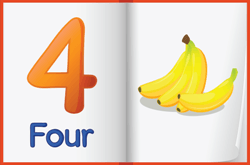
-
banana/bananas
one banana, 4 bananas -
child/children
1 child, 10 children -
foot/feet
1 foot, 2 feet, nineteen feet -
apple/apples
1 apple, two apples, a dozen apples
Countable nouns have singular and plural forms. Plural forms are usually made by adding an "s" to the singular noun, but not always.
Here are some more examples of countable nouns in their singular and plural forms:
| Singular | Plural |
| goose | geese |
| hand | hands |
| computer | computers |
| office | offices |
| man | men |
| person | people |
| boy | boys |
| bed | beds |
| pencil | pencils |
| woman | women |
| newspaper | newspapers |
| ball | balls |
| strawberry | strawberries |
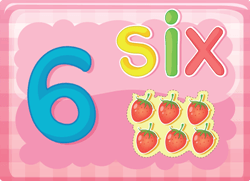
Rules for countable nouns
1. Singular countable nouns
A) You must use an article, quantity word (number), or possessive adjective
before a singular count noun
Incorrect:
Incorrect:
- Mrs. Smith is principal.
-
Mrs. Smith is the principal.
-
Mrs. Smith is our principal.
-
Mrs. Smith is a principal.
Incorrect:
- I lost earring.
-
I lost an earring.
-
I lost one earring.
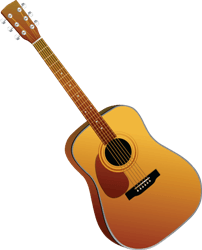
-
I lost her earring.
- Did you bring guitar?
-
Did you bring a guitar?
-
Did you bring my guitar?
-
Did you bring that guitar?
B) Use the article A or AN the first time you use the singular
countable noun
Use a when the next word (noun or adjective) starts with a consonant
Examples:
Use an when the next word starts with a vowel (a/e/i/o/u)
Examples:
Examples:
-
I need a phone.
-
Did you buy a new car?
-
Sally has a black cat.
- Please hand me a pen.
Use an when the next word starts with a vowel (a/e/i/o/u)
Examples:
-
Nick ate an apple at lunch.
-
She is an active girl.
Without the adjective "active" we would use a.
She is a girl. -
He is an artist.
- Did you catch an insect?
C) Use the article THE with a singular countable noun when the noun has already been introduced
Examples:
-
I need a phone. Here is the phone.
-
Did you buy a new car? Yes, this is the new car.
-
He is an artist. Is Bob the artist?
- Did you catch an insect? Yes, here is the insect.
*Note: THE can also be used with plural countable nouns as seen in rule #2B below.
2. Plural countable nouns
A) You can use a number greater than one in front of a plural countable
noun
Examples:
-
She has three dogs.
-
I have two brothers.
-
There are four kids in our choir.
B) You can use determiners or quantity words with plural countable nouns
Quantity words:
Examples:
- some
- any
- most
- more
- all
- a lot of
- many
- both
- several
- few
- a couple of
- the
Examples:

-
We have many pets.
-
I have a few notebooks.
-
She bought a lot of groceries.
-
Nick has several friends.
-
Do you have any envelopes?
- Billy has a couple of questions.
- Did you see the dogs?
C) Most determiners or quantity words are optional before plural countable
nouns
You do not have to use a determiner before a plural countable noun.
However, determiners make the countable noun more specific.
Here are the same sentences from above without determiners.
Examples:
However, determiners make the countable noun more specific.
Here are the same sentences from above without determiners.
Examples:
-
We have pets.

-
I have notebooks.
-
She bought groceries.
(This could mean a lot of groceries as in the picture above or a few groceries as in the picture shown here.) -
Nick has friends.
-
Do you have envelopes?
-
Bill has questions.
- Did you see dogs?
3. Possessive adjectives and countable nouns
You can use possessive adjectives before singular and plural countable nouns
Possessive adjectives:- my
- your
- his
- her
- its
- our
- their
Examples:
-
Have you seen my dog?
-
My children are at the park.
-
Your house is large.
- Put on your boots.
-
Tom forgot his coat.
-
His gloves are black.
-
Sally loves her grandmother.
-
Her daughters are in school.
-
The dog buried its bone.
-
Its feathers are white.
-
Our car is in the shop.
-
Have you found our cats?
-
The family moved out of their house.
- Where are their parents?
4. Some nouns can be countable or uncountable depending on their meaning and how they are used in a sentence.
For example, let's look at the word "glass."
singular: glass
plural: glasses
In sentences A and B, glass is a countable noun. We are talking about a drinking glass.
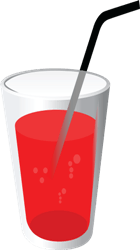
In sentence C, glasses is a countable noun. We are talking about a pair of spectacles or eye glasses.
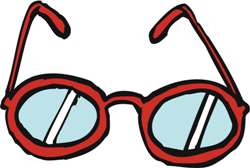
In sentence D, glass is an uncountable noun. We are talking about glass as a material. The window is made of glass. The window can be counted, but this type of glass cannot be counted.
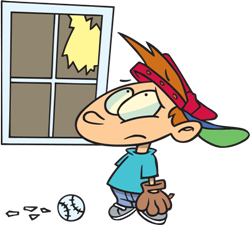
Let's look at another example.
singular: language
plural: languages
In sentence A, language is a singular countable noun.
In sentence B, languages is a plural countable noun.
In sentence C, language is an uncountable noun.
A few other words that can be countable or uncountable are:
singular: glass
plural: glasses
A) I drank a big glass of juice.
B) She drank two glasses.
C) He cannot see and will have to buy glasses.
D) The ball broke glass in the window.
B) She drank two glasses.
C) He cannot see and will have to buy glasses.
D) The ball broke glass in the window.
In sentences A and B, glass is a countable noun. We are talking about a drinking glass.

In sentence C, glasses is a countable noun. We are talking about a pair of spectacles or eye glasses.

In sentence D, glass is an uncountable noun. We are talking about glass as a material. The window is made of glass. The window can be counted, but this type of glass cannot be counted.

Let's look at another example.
singular: language
plural: languages
A) I only speak one language.
B) She speaks three languages.
C) English is my favorite language.
B) She speaks three languages.
C) English is my favorite language.
In sentence A, language is a singular countable noun.
In sentence B, languages is a plural countable noun.
In sentence C, language is an uncountable noun.
A few other words that can be countable or uncountable are:
-
paper
-
hope
-
business
-
death
-
time
-
marriage
-
power
-
work
-
property
- hair
These were the rules of countable nouns. Now that you know them, it is time to practice: Illustrated Worksheet on Countable and Uncountable Nouns.
Get Updates, Special Offers, and English Resources
Download your FREE GIFT (the first two chapters of
English Short Stories Book and Workbook)
as soon as you join!

By submitting your email, you consent to receiving updates and newsletters from us and to the sharing of your personal data with third parties for the purposes of sending you communications. We will not spam you. You can unsubscribe at any time. For more information, please see our privacy policy.










